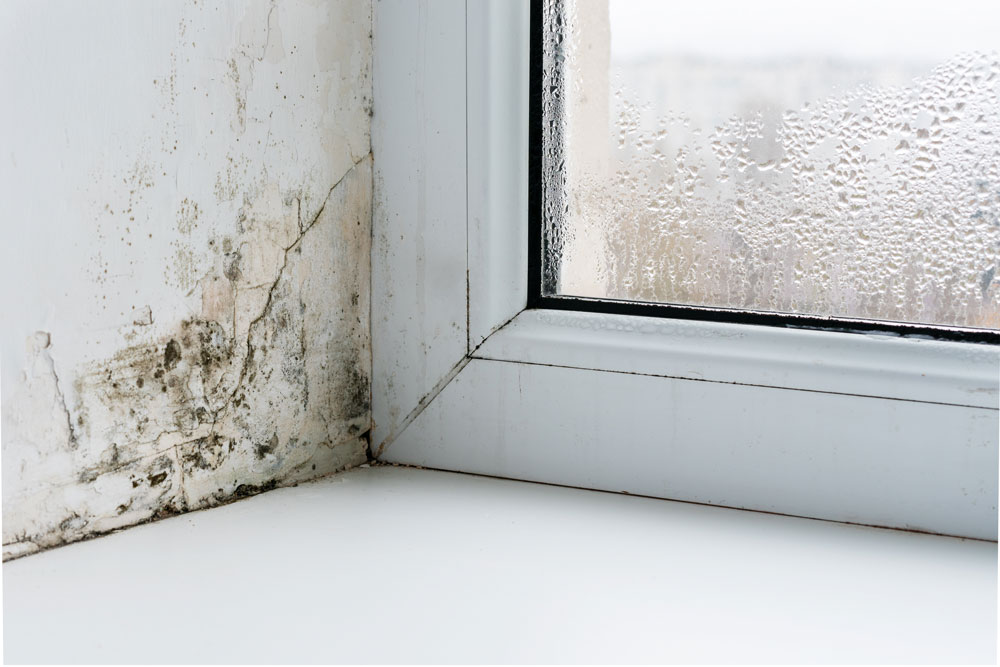How To Get Rid Of Mould On Windows

CONTENTS
- What causes mould to grow on windows?
- Why you must have mould removed as soon as possible
- How to remove mould
- How to stop mould growing on windows
- Get in touch
One of the most common places to find mould in the home is on and around windows and windowsills. Even a small cluster of dark spots and smudgy marks can quickly spread to your walls, flooring, and furniture and become a big, expensive problem.
Here at ICE Cleaning, we provide quick, long-lasting mould removal services. Our technicians can eliminate all traces of mould in your property, and each service comes with a lifetime guarantee*. They are available day and night, nationwide, and can be on site in hours in an emergency.
Keep reading to find out why mould is growing on your windows and how to remove it.
*subject to advisories
What causes mould to grow on windows?
Mould is caused by excess moisture and usually grows in areas with high humidity, damp, and poor ventilation.
The biggest cause of mould on windowsills is condensation. This is when warm air that contains lots of moisture comes in contact with a cold surface, like a windowpane. It mainly occurs in rooms which get very warm, steamy, and humid, like bathrooms and kitchens during cooking and washing.
Leaking window frames can also let in rainwater. Wooden window frames are more likely to have mould growing on them than uPVC windows, for example, as wood absorbs moisture, creating the perfect environment for mould to grow.
Why you must have mould removed as soon as possible
Firstly, mould is very dangerous to be exposed to and can cause health problems. Ingesting, inhaling, and touching mould spores could cause an allergic reaction like a runny nose, wheezing, or coughing.
Some types of mould, like black mould (known also as Stachybotrys Chartarum) which often grows on windows, can release toxic substances.
Certain groups are more vulnerable to mould exposure like very young children, elderly people, people with respiratory problems, and people with asthma and eczema.
Not only is it hazardous to live with mould, it could damage your property, as well. Mould will eat away at wooden windowsills and cause it to slowly deteriorate. This damage may let in more rainwater into your property, making the mould worse.
Mould can spread very quickly if not treated, too, and may end up on curtains and walls near the affected window before taking over your property.
How to remove mould
There are plenty of DIY cleaning tips online for mould removal that simply require household products. However, you must always leave mould remediation to the professionals.
Firstly, mould removal is dangerous without personal protective equipment (PPE) as you are more likely to come in contact with it and touch, inhale, or ingest spores.
Some cleaning products, like bleach, can also be harmful and could irritate your skin and eyes. You might even accidentally create hazardous substances if you mix it with other chemicals.
You could clean it up incorrectly, too, and make the situation worse. Scrubbing or washing a mould patch, for example, can spread the spores around. Chemicals like bleach, on the other hand, may damage surfaces, such as discolouring painted window frames.
Professional cleaners have the PPE and specialist products and equipment to safely remediate all the mould spores from the surfaces and the air. Our technicians can diagnose the root cause of the mould and advise on how to prevent it, as well.
This is especially important when it comes to mould on your windows and windowsills. Should you fail to fix the leaks or sort the condensation problem, it will quickly return after removal.
How to stop mould growing on windows
There are lots of ways to prevent mould, such as keeping humidity levels low, and watching out for water damage and damp in your property. Here are some specific tips for keeping your windows mould-free:
- Stop condensation forming by opening windows regularly and using extractor fans in bathrooms and kitchens so moist air does not build up
- Wipe down windows and use a window vacuum regularly to remove any condensation
- Keep the heating in your property even and don’t let the temperature rise and fall dramatically as this can cause condensation to form
- Opt for double glazed windows so your windowpanes will not be cold
- Open the blinds and curtains or they could form a cold pocket of air which can lead to condensation
Get in touch
Our Dewpoint-accredited technicians can use the latest industry-leading equipment to remove all traces of the mould in your home and significantly improve its air quality.
Contact our friendly team today to book our technicians for mould remediation on 0208 066 0360 and at enquiries@icecleaning.co.uk.

Speak with me today,
I’m here to help
By asking you a few questions either via phone or email I can immediately provide a realistic estimation of the cost.
You’re in good company. We’ve cleaned for the following commercial clients… View all

Why choose us?
- Cater to a wide variety of cleaning situations
- Nationwide coverage, available 24/7
- Cater to commercial and domestic clients
- Free survey provided prior to quotation
- Emergency response team
- Offer a bespoke service designed to suit all your needs
- All technicians hold professional health and safety qualifications, including BICSc, IOSH, Dewpoint Professional & Safe Contractor
We’re fully accredited
We place best practise, professional expertise and health and safety at the core of our business. We’re fully compliant with all legal obligations. You can view a list of our accreditations below, or visit our Health & Safety page for more information.











-RGB-small.1707319151.jpg)




















